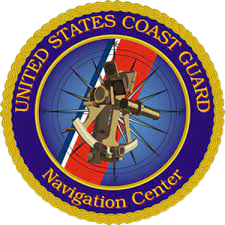Description: The Global Positioning System: Charting the Future Summary Report
by a Panel of the
NATIONAL ACADEMY OF PUBLIC ADMINISTRATION
and by a Committee of the
NATIONAL RESEARCH COUNCIL
The National Academy of Public Administration
Foreword (exerpt from document)
The National Defense Authorization Act for Fiscal Year 1994 (Public Law 103-160) mandated an independent study, funded by the Department of Defense, on the future management and funding of the Global Positioning System (GPS) program. This report presents the results of a joint study, which was conducted by the National Academy of Public Administration (NAPA) and the National Research Council (NRC) of the National Academies of Sciences and Engineering. A NAPA panel and an NRC committee examined several GPS policy, management, and technical issues. Describing the need for this study, the Senate Armed Services Committee said: "It is clear that GPS offers the potential to revolutionize the movement of goods and people the world over. Civil and commercial exploitation of GPS could soon dwarf that of the Department of Defense and lead to large productivity gains and increased safety in all transportation sectors." Other studies in recent years have examined aspects of GPS and have contributed importantly to the successful development of the system. This report, The Global Positioning System: Charting the Future, builds on the work of its predecessors and is intended principally to advise Congress, the secretaries of defense and transportation, and through them the President and the American public, on actions needed to ensure the continued success of GPS in meeting essential military and civilian needs. The report examines the key areas for GPS — commercial, civil government, and international — as well as paramount national security interests. Recommendations to further improve the technology also are presented. The report is the product of a collaboration between the two congressionally chartered academies. Each organization selected a group of distinguished and highly qualified experts to conduct their portion of the joint study. NAPA formed a panel chaired by James R. Schlesinger, former secretary of defense and secretary of energy. This group provided expertise in military and international affairs, government organization and operation, research and development, fiscal policy and private sector investment, and international commercial communications. NRC asked Laurence J. Adams, former president and chief operating officer of Martin Marietta Corporation, to head its committee of outstanding individuals chosen from the aerospace and electronics industries, the transportation sector, and university and research centers specializing in astrodynamics, electrical engineering, communications, mapping, and other relevant areas. Because each academy operates differently, the NAPA and NRC portions of this study followed different schedules with different institutional procedures. Nevertheless, the NAPA and NRC staffs worked closely together throughout this study, drafting joint outlines, exchanging information, attending both the NAPA panel and NRC committee meetings, and meeting frequently to work out details of the joint report. Summaries of the reports of both committees are included together in this document, delivered in response to the congressional request. We wish to commend the two committees and their chairs, who so ably conducted this study over the past year. We also acknowledge the work of the talented and energetic staffs of the two study groups and the many people both in and out of government who contributed to this report.
Click on "GPS:Charting the Future" to read the full PDF document .

